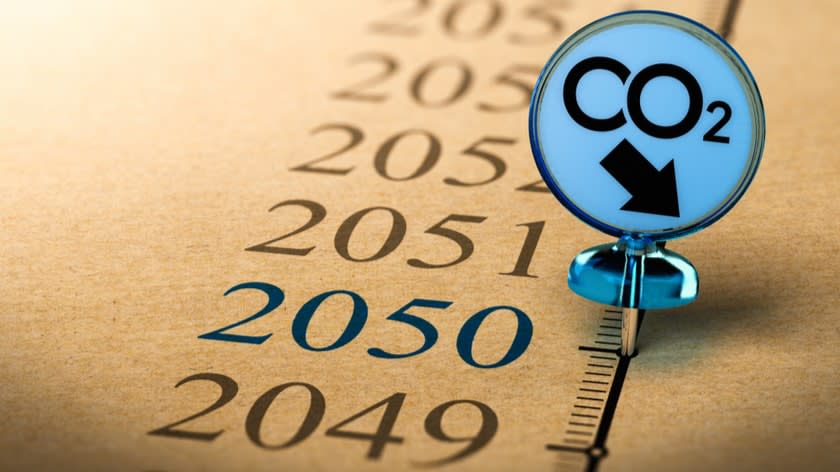SustainaWeekly - Still far from Net Zero as we enter COP27

With COP27 kicking off, we take a look at where the world is in terms of the pathway to a Net Zero scenario in this SustainaWeekly. The evidence suggests that the gap between government’s targets and ambitions and a Net Zero scenario has becoming noticeably less over the last year or so, though there remains a very large gap between ambitions and policies. It is clear is that a very significant step up of policies is needed to get to a below 2°C scenario, while still more ambition and policy implementation is necessary to get to a 1.5°C scenario. We go on to review the IEA’s latest estimates for needed investment in clean energy under a Net Zero scenario. Though all countries need to step up significantly from current levels, the gap is largest for emerging and developing economies, outside of China. Finally, we set out some of the key conclusions from the ECB’s thematic review on climate-related and environmental risk management by financial institutions.
Economist: With COP27 kicking off, we take a look at how far the world is from a Net Zero scenario. The gap to Net Zero in terms of pledges and targets is becoming noticeably less. However, there remains a large gap between ambitions and policy implementation. A very significant step up of policies is needed to get to a below 2°C scenario.
Sectors: Investment in renewable energy needs to triple by 2030. Many governments have already stepped up plans to boost these investments, but emerging and developing countries are lagging seriously behind. Financial support for developing economies will be on the agenda again at COP27.
Banks: The ECB published its thematic review on the management of climate-related and environmental risks by financial institutions. Even though 85% of banks have in place some basic practices, there are still large blind spots, reducing the effectiveness of climate-related risk management. Firm deadlines set for end 2024, with some intermediate targets as well.
ESG in figures: In a regular section of our weekly, we present a chart book on some of the key indicators for ESG financing and the energy transition.
Still a distance to Net Zero
With COP27 kicking off, we take a look at how far the world is from a Net Zero scenario
The gap to Net Zero in terms of pledges and targets is becoming noticeably less
However, there remains a large gap between ambitions and policy implementation
With COP27 having kicked off yesterday (6-12 November), we take a look at where the world is in terms of the pathway to a Net Zero scenario that would limit global warming to 1.5 degrees compared to pre-industrial levels. The evidence suggests that the gap between government’s targets and ambitions and a Net Zero scenario has becoming noticeably less over the last year or so, though there remains a very large gap between ambitions and policies.

Gap between ambitions and Net Zero is closing
In judging where the global economy is heading in terms of emissions and global warming, the IEA’s World Energy Outlook () is a good place to start. We have set out the pathways for emissions and warming in the chart above on the left. Under the Announced Pledges Scenario (APS), which takes account of all the commitments made by governments as well as longer term net zero emissions targets, emissions are projected to fall sharply in the coming decades. This would lead a median global average surface temperature rise of around 1.7 °C by 2100. This indicates that the gap between government’s ambitions and a Net Zero scenario is closing. The IEA notes that this reflects new targets and pledges that have been made over the last year, the most significant of which was India’s announcement of a 2070 net zero emissions target.
Still a large gap between ambitions and policies
While ambitions have been stepped up, policies are lagging behind those ambitions. Under the IEA’s Stated Policies Scenario (STEPS) – which takes into account existing policies and measures and those that are under development – emissions would be flattish over the next years, before falling more slowly in the decades after 2030. This would lead a median global average surface temperature rise of around 2.5 °C by 2100. The so-called ‘implementation gap’ would need to be closed for the emission reduction set out under the APS to be achieved.
UN paints a more gloomy picture of both ambitions and policies
The UN also published its Emissions Gap report recently (see ), which paints a more negative picture. However, some of the differences are related to the specific assumptions behind the scenarios, as well as some technical differences. Under the UN’s current policies scenario (see chart on the right above), it estimates global warming at around 2.8°C by the end of the century. This is higher than the IEA’s estimate, but this looks to be mostly presentational, as the UN presents its numbers as a 66% chance rather than a 50% chance. Meanwhile, the UN notes that current Nationally determined contributions (NDCs) imply a temperature warming of 2.4-2.6°C by 2100, for conditional and unconditional pledges, respectively. Again this seems higher than the IEA’s estimate based on pledges, but it excludes net zero targets. Once NDCs are supplemented with net zero targets, the UN’s estimates do converge towards the IEA’s APS scenario, with warming seen at 1.8°C and are exactly the same on the basis of a 50% chance.
Overall then, it depends whether one takes a glass is half full or half empty approach. However, what is clear is that a very significant step up of policies is needed to get to a below 2°C scenario, while still more ambition and policy implementation is necessary to get to a 1.5°C scenario. In addition, there is a lot of uncertainty about potential outcomes if governments do not go further than current policies. Indeed, under current policies there is a non-negligible chance that the temperature rise could significantly exceed 3°C.
Topics at COP27
Egypt's COP27 presidency has stated that this year’s conference will be about moving from negotiations, and ‘planning for implementation’ of the promises and pledges already made. To this end, it has identified a range of topics focused on enhancing implementation as well as raising ambition on broad range of issues related to climate change. As usual a key area of focus is whether countries step up mitigation ambitions, especially in terms of 2030 emission targets. The UN notes that while at COP26 countries agreed to deliver stronger commitments this year, only 23 out of 193 countries have submitted their plans to the UN so far. Meanwhile, many stakeholders are calling for greater levels of funding to help poorer countries adapt to the climate consequences of global warming, while financial support for mitigation efforts will remain on the agenda as well (see note on investment needs later in this publication for more). Although not officially on the agenda, the topic of ‘loss and damage’ is grabbing attention. In particular, many developing countries - that are often most impacted from natural disasters made more frequent and intense by global warming – argue they should receive financial compensation. The negotiations will also include technical discussions on emission measurement.

